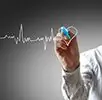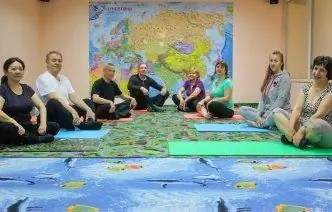Human physical health

The physical health of a person is the natural state of the body, due to the normal functioning of all its organs and systems. Stress, bad habits, unbalanced diet, lack of physical activity and other unfavorable conditions affect not only the social sphere of human activity, but also cause the appearance of various chronic diseases.
For their prevention, it is necessary to lead a healthy lifestyle, the basis of which is physical development. Regular fitness, yoga, jogging, swimming, ice skating, and other physical activities can help keep your body fit and maintain a positive attitude. A healthy lifestyle reflects a certain life position aimed at developing culture and hygiene skills, maintaining and strengthening health, maintaining an optimal quality of life.
Human physical health factors
The main factor in a person's physical health is his lifestyle.
A healthy lifestyle is reasonable human behavior, including:
- The optimal ratio of work and rest;
- Correctly calculated physical activity;
- Rejection of bad habits;
- Balanced diet;
- Positive thinking.
A healthy lifestyle ensures the full fulfillment of social functions, active participation in the labor, social, family and household spheres, and also directly affects life expectancy. According to experts, a person's physical health depends on lifestyle by more than 50%.
The factors of environmental impact on the human body can be divided into several groups of impact:
- Physical - humidity and air pressure, as well as solar radiation, electromagnetic waves and many other indicators;
- Chemical - various elements and compounds of natural and artificial origin, which are part of air, water, soil, food, building materials, clothing, electronics;
- Biological - useful and harmful microorganisms, viruses, fungi, as well as animals, plants and products of their vital activity.
The impact of the combination of these factors on the physical health of a person, according to experts, is about 20%.
To a lesser extent, health is influenced by heredity, which can be both a direct cause of diseases and take part in their development. From the point of view of genetics, all diseases can be divided into three types:
- Hereditary - these are diseases, the occurrence and development of which is associated with defects in inherited cells (Down's syndrome, Alzheimer's disease, hemophilia, cardiomyopathy, and others);
- Conditionally hereditary - with a genetic predisposition, but provoked by external factors (hypertension, atherosclerosis, diabetes, eczema, and others);
- Non-hereditary - due to the influence of the environment, and not associated with the genetic code.
All people have a genetic predisposition to various diseases, which is why doctors are always interested in the diseases of the patient's parents and other relatives. The influence of heredity on human physical health is estimated by researchers at 15%.
Medical care, according to expert data, has almost no effect on health (less than 10%). According to WHO research, the main cause of both deterioration in the quality of life and premature death are chronic diseases, which can be divided into four main types:
- Cardiovascular (heart attack, stroke);
- Chronic respiratory (obstructive pulmonary disease, asthma);
- Oncological;
- Diabetes.
Alcohol consumption, smoking, unhealthy diet and lack of physical activity contribute to the development of chronic diseases.
Consequently, the main indicator of a person's physical health is a lifestyle that should be aimed at preventing diseases, strengthening health, achieving spiritual and physical harmony.
Human physical development and health
The basis of a healthy lifestyle is the physical development of a person, and health directly depends on the optimal balance of physical activity and rest. Regular exercise provides a high level of immunity, improves metabolism and blood circulation, normalizes blood pressure, and increases strength and endurance. When planning physical activity, it is imperative to proceed from the age and physiological characteristics of a person, take into account the state of health, and consult with a doctor about possible contraindications. Loads should be optimal: insufficient - ineffective, excessive - harm the body. In addition, over time, the loads become habitual and must be gradually increased. Their intensity is determined by the number of repetitions of the exercises, the range of motion and the pace of execution.
Physical culture and human health
Physical culture is a sphere of social activity aimed at improving health and developing a person's physical abilities. Therefore, doctors especially emphasize the connection between physical culture and human health. There are several types of physical education:
- Basic - aimed at acquiring basic vital physical qualities;
- Sport is a competitive activity based on the use of physical exercises;
-

Human physical health - concept and indicators Health-improving and rehabilitation is the use of physical exercises as a treatment and restoration of body functions (therapeutic and adaptive physical education);
- Hygienic - various forms of physical education in the domestic framework (morning exercises, walks and other exercises that are not associated with significant loads);
- Recreational - tourism, weekend hikes, physical culture and sports entertainment.
The last two types are especially important, since they promptly normalize the state of the body and contribute to the creation of favorable conditions for life.
A healthy lifestyle is the most important indicator of a person's physical health. To lead it means, on the one hand, to maintain social activity and a positive attitude towards the world, and on the other hand, to give up bad habits, balance diet and exercise regularly. Physical education provides motivation to prevent disease, keep the body in good physical shape, and increase life expectancy. Exercise improves mood, increases self-esteem and relieves stress, increases performance and has a beneficial effect on the body as a whole.
YouTube video related to the article:
Found a mistake in the text? Select it and press Ctrl + Enter.







